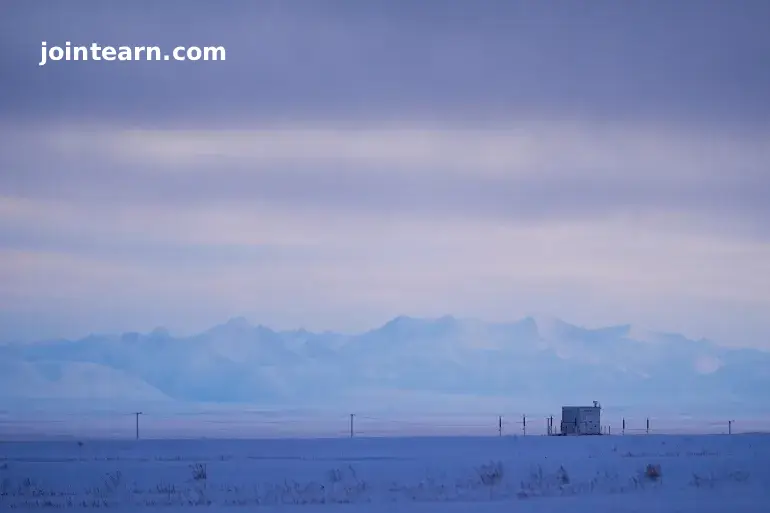
The Trump administration has officially approved plans to open Alaska’s Arctic National Wildlife Refuge (ANWR) for oil and gas drilling, marking a significant shift in US environmental and energy policy. The decision reignites long-standing tensions between conservationists, Indigenous groups, and energy industry supporters over the future of one of America’s last untouched wilderness areas.
Opening Alaska’s Pristine Wilderness to Energy Exploration
The US Department of the Interior announced Thursday that it has finalized a “sweeping package” of measures to boost energy production and modernize land management across Alaska. Central to the initiative is the plan to open the 1.5 million-acre coastal plain of the Arctic National Wildlife Refuge—land that is both ecologically rich and culturally sacred to Indigenous communities—for oil and gas lease sales.
“From day one, President Trump directed us to unlock Alaska’s energy and resource potential while honoring commitments to local communities,” said Interior Secretary Doug Burgum. “By reopening the Coastal Plain, we’re strengthening America’s energy independence, creating jobs, and driving economic growth across Alaska.”
The decision follows a Republican-backed energy bill passed earlier this year that mandates at least four lease sales within the ANWR over the next decade, offering substantial tax incentives for exploration and production.
Indigenous Communities Divided Over Drilling Plans
The Arctic National Wildlife Refuge sits on traditional Inupiaq and Gwich’in lands. While the Inupiaq community of Kaktovik—located within the refuge—has expressed support for the plan, the Gwich’in people remain firmly opposed, citing environmental, cultural, and spiritual concerns.
“This is sacred land,” said Meda DeWitt, Alaska senior manager at The Wilderness Society. “The Trump administration is prioritizing corporate interests over the lives, cultures, and spiritual responsibilities of the people whose survival depends on the health of the Arctic Refuge.”
The Kaktovik Inupiat Corporation, however, welcomed the move. Its president, Charles “CC” Lampe, said the decision reflects long-overdue respect for local voices:
“It’s encouraging to see Washington advancing policies that support Kaktovik’s long-term success. Responsible oil development can bring jobs, infrastructure, and hope to our community.”
Environmental Concerns and Global Impact
The coastal plain of the ANWR—often called “America’s Serengeti”—hosts a fragile ecosystem that supports migrating caribou, polar bears, and millions of birds. Environmental groups warn that drilling could irreversibly damage habitats, threaten biodiversity, and accelerate climate change.
Conservationists argue that the move undermines decades of bipartisan efforts to preserve the refuge as a global symbol of environmental stewardship.
“Oil development in the Arctic Refuge is a step backward,” said Jennifer Morgan, a climate policy analyst. “It ignores both scientific warnings and Indigenous opposition in the pursuit of short-term economic gain.”
Additional Alaska Land Projects Underway
In addition to opening ANWR, the Trump administration also finalized a land exchange agreement enabling the construction of a road between King Cove and Cold Bay through the Izembek National Wildlife Refuge—a project long debated for its environmental implications.
Republican Senator Lisa Murkowski, a strong advocate for the road, said it would improve access to emergency services for isolated communities.
“This isn’t a major highway,” she told reporters. “It’s an 11-mile gravel road meant for noncommercial use. We must balance community needs with environmental protection.”
However, conservation and tribal groups have vowed to challenge the project in court, calling it another attempt to roll back federal protections for public lands.
A Renewed Debate Over Energy Independence and Climate Policy
The decision to allow drilling in the Arctic Refuge has reignited the national debate over energy independence versus environmental protection. Proponents argue that developing Alaska’s vast oil reserves will reduce reliance on foreign energy, create high-paying jobs, and bolster state revenues. Critics contend that the move contradicts the growing global commitment to transition away from fossil fuels and protect Indigenous rights.
As the administration moves forward with lease sales and infrastructure planning, legal battles are expected to intensify, potentially delaying or halting development.
Key Takeaways
- Trump administration finalizes plan to open Arctic National Wildlife Refuge for drilling.
- 1.5 million-acre coastal plain to host oil and gas lease sales.
- Indigenous communities divided: Inupiaq support, Gwich’in oppose.
- Conservationists warn of irreversible environmental damage.
- Legal challenges expected from environmental and tribal groups.


Leave a Reply